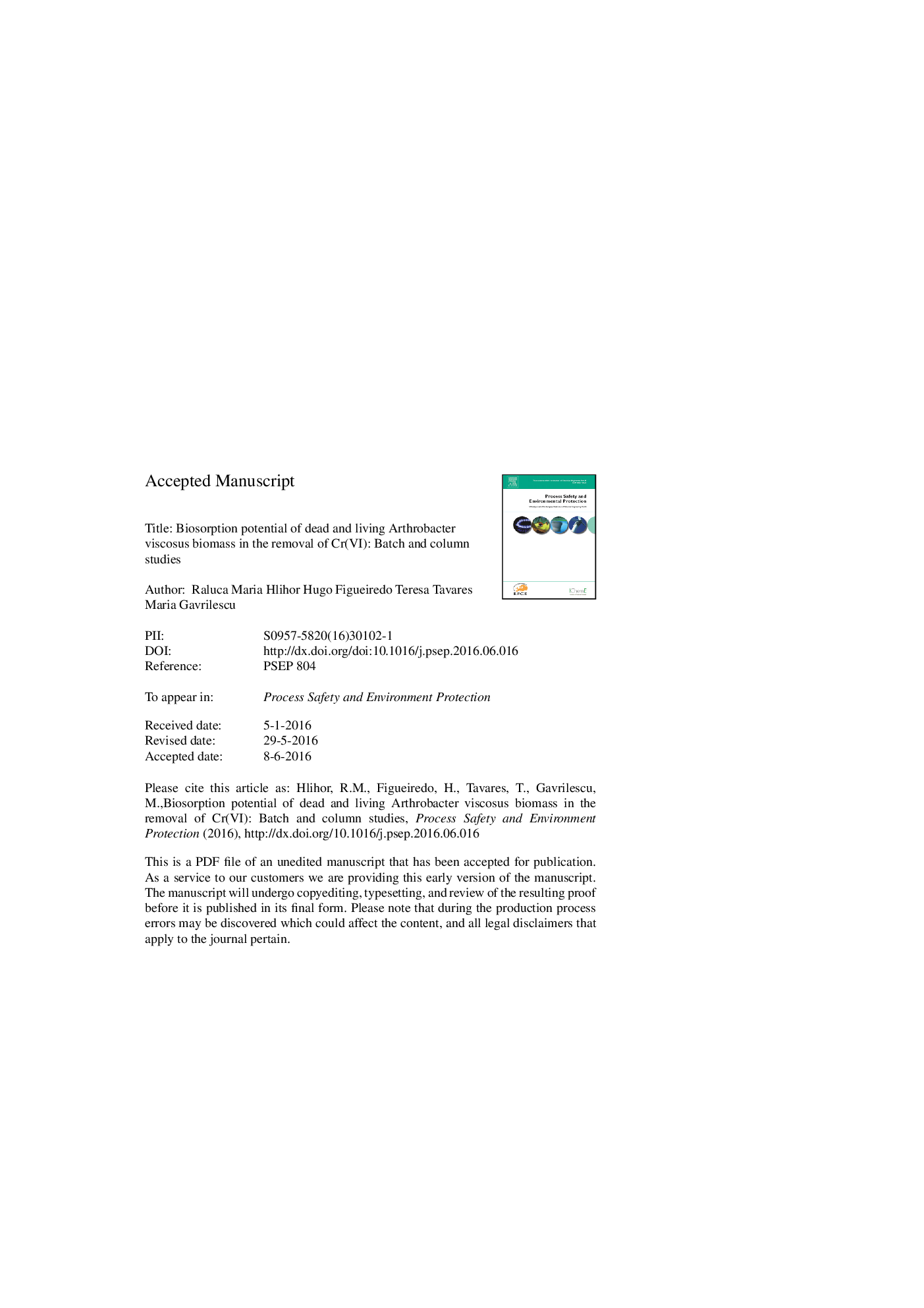| Article ID | Journal | Published Year | Pages | File Type |
|---|---|---|---|---|
| 4980734 | Process Safety and Environmental Protection | 2017 | 37 Pages |
Abstract
Batch experiments were conducted with dead and living Arthrobacter viscosus biomass for Cr(VI) removal from aqueous solution. Both dead and living cells successfully reduced Cr(VI) to Cr(III) from aqueous solution in highly acidic pH (pH 1 and 2) with an efficiency of 100% for aqueous solutions having the initial concentrations of Cr(VI) lower than 100Â mg/L. Langmuir isotherm and kinetic models based on reduction could simulate chromium removal at 5 and 8Â g/L biosorbent dosages and in highly acidic pH conditions (pH 1-2). Further, the potential use of the A. viscosus biomass was examined in an open system, where Cr(VI) removal from aqueous solution was performed by a bacterial biofilm supported on a new type of polyethylene supports. The experiment showed a favorable uptake of chromium ions bound to the biomass, of 20.37Â mg/g, with high potential for scaling up. This study showed that the reduction of toxic Cr(VI) to the less toxic Cr(III) by A. viscosus, in batch and continuous modes is an efficient and promising technique for wastewaters polluted with chromium.
Related Topics
Physical Sciences and Engineering
Chemical Engineering
Chemical Health and Safety
Authors
Raluca Maria Hlihor, Hugo Figueiredo, Teresa Tavares, Maria Gavrilescu,
